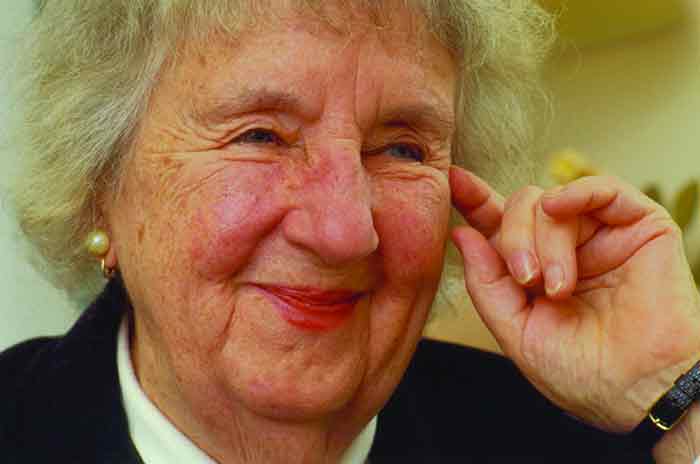
International Nurses Day 2021: Virginia Henderson, the first lady of nursing
Virginia Henderson was born in Kansas City, Missouri, in 1897. She was the fifth of eight children of Lucy Minor Abbot and Daniel B. Henderson. At age four, she moved to Virginia, and began her schooling at Bellevue, a preparatory school owned by her grandfather William Richardson Abbot
International Nurses Day 2021, a Virginia Henderson retrospective
Her father was a former teacher at Bellevue and was an attorney representing the Native American Indians in disputes with the U.S. Government, winning a major case for the Klamath tribe in 1937.
She received her early education at home in Virginia with her aunts, and uncle Charles Abbot, at his school for boys in the community Army School of Nursing at Walter Reed Hospital in Washington D.C. where she took her diploma in 1921.
After receiving her Diploma, Virginia Henderson worked at the Henry Street Visiting Nurse Service for two years after graduation.
She initially planned to switch professions, but her strong desire to help the others averted her plan.
In 1923, she started teaching nursing at the Norfolk Protestant Hospital in Virginia and a few years later she entered the Teachers College at Columbia University where she took her Master’s Degree in 1934.
From 1924 to 1929, she worked as an instructor and educational director for the Norfolk Protestant Hospital, Norfolk, Virginia.
The following year, she was a nurse supervisor and clinical instructor at the outpatient department of Strong Memorial Hospital in New York.
For 14 years of her career, she worked as an instructor and associate professor at Teachers College, Columbia University in New York and since 1953, Henderson was a research associate at Yale University School of Nursing.
Invited by professional societies, universities and governments to share and inspire nurses and other healthcare professionals, she traveled the world throughout her whole career.
Virginia Henderson consistently stressed a nurse’s duty to the patient rather than to the doctor
Her efforts provided a basis to the science of nursing, including a universally used system of recording patient observations, and have helped make nurses far more valuable to doctors.
In 1939, she was the author of three editions of “Principles and Practices of Nursing,” a widely used academic text. Her “Basic Principles of Nursing,” published in 1966 and revised in 1972, has been published in 27 languages by the International Council of Nurses.
One of her most formidable achievements was a research project in which she gathered, reviewed, cataloged and classified every known piece of research on nursing published in English, resulting in the four-volume “Nursing Research: Survey and Assessment,” written with Leo Simmons and published in 1964, and her four-volume “Nursing Studies Index,” completed in 1972.
Henderson co-authored the fifth (1955) and sixth (1978) editions of “Textbook of Principles and Practice of Nursing” when the original author, Bertha Harmer, died. Until 1975, the book’s fifth edition was the most widely adopted nursing textbook in English and Spanish by various nursing schools.
But probably the most famous work of Virginia Henderson made is the Nursing Need Theory
She developed this theory to define the unique focus of nursing practice.
The theory focuses on the importance of increasing the patient’s independence to hasten their progress in the hospital.
Henderson’s theory emphasizes the basic human needs and how nurses can assist in meeting those needs.
The main assumptions of the theory are the four here listed:
- Nurses care for patients until they can care for themselves once again;
- Although sometimes not directly expressed, patients desire to return to health;
- Nurses are willing to serve, and that “nurses will devote themselves to the patient day and night.”;
- Mind and body are inseparable and interrelated.
The theory also states that individuals have basic health needs and require assistance to achieve health and independence or a peaceful death.
According to her, an individual achieves wholeness by maintaining physiological and emotional balance.
She also defines the patient as someone who needs nursing care, but did not limit nursing to illness care.
For example one of the key roles of the nurse is maintaining a supportive environment conducive to health, and in fact this is one of her 14 activities for patient assistance.
Virginia Henderson even wrote her definition of nursing before the development of theoretical nursing. The nurse’s goal is to make the patient complete, whole or independent.
In turn, the nurse collaborates with the physician’s therapeutic plan, always remaining an independent practitioner able to make an independent judgment because the caregiver is expected to carry out a physician’s therapeutic plan, but individualized care results from the nurse’s creativity in planning for care.
The Needs Theory can be applied to nursing practice as a way to set goals based on Henderson’s 14 components and it was a great step forward for nursing because it worked as a basis for new research.
Virginia Henderson died at the age of 98 on March 19, 1996, at a hospice in Branford, Connecticut, and still today is considered one of the leading personalities in the nursing field.
23_ahtishamRead Also:
Nurse’s Appeal From Intensive Care: ‘We’re Exhausted, Use Your Heads’
A 20-Year-Old Nurse Who Was Treating The Wounded Also Killed In Myanmar
Ahmedabad (India): GCS Hospital Celebrates International Nurses Day With COVID Patients
Source:
Angelo Gonzalo (Nurseslab)
Younas Ahtisham (International Journal of Caring Sciences)


